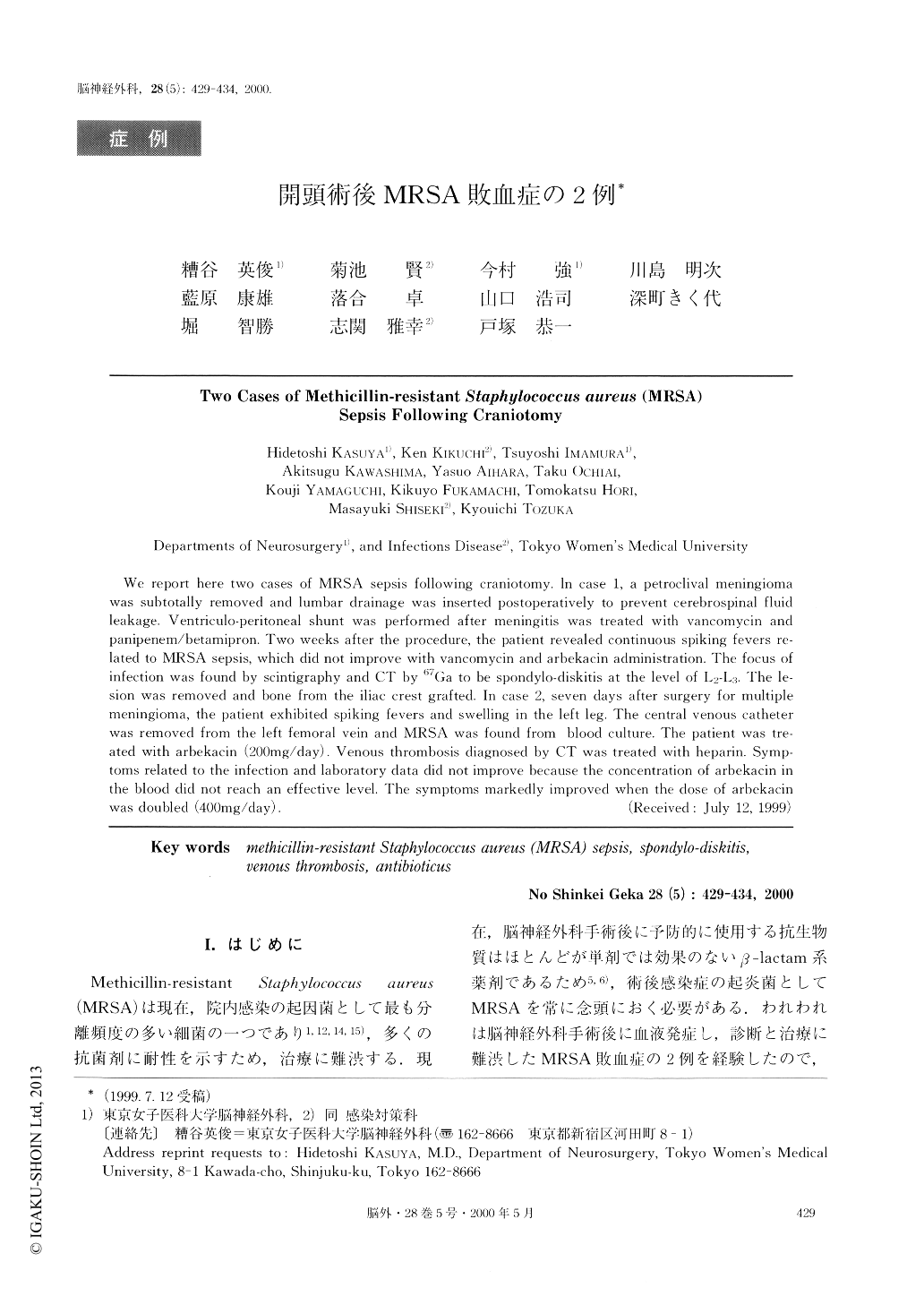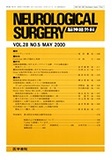Japanese
English
- 有料閲覧
- Abstract 文献概要
- 1ページ目 Look Inside
I.はじめに
Methicillin-resistant Staphylococcus aureas(MRSA)は現在,院内感染の起因菌として最も分離頻度の多い細菌の一つであり1,12,14,15),多くの抗菌剤に耐性を示すため,治療に難渋する,現在,脳神経外科手術後に予防的に使用する抗生物質はほとんどが単剤では効果のないβ-lactam系薬剤であるため5,6),術後感染症の起炎菌としてMRSAを常に念頭におく必要がある.われわれは脳神経外科手術後に血液発症し,診断と治療に難渋したMRSA敗血症の2例を経験したので,診断及び治療方法,さらに手術後の抗生物質の使用方法について考察を加える.
We report here two cases of MRSA sepsis following craniotomy. In case 1, a petroclival meningioma was subtotally removed and lumbar drainage was inserted postoperatively to prevent cerebrospinal fluid leakage. Ventriculo-peritoneal shunt was performed after meningitis was treated with vancomycin and panipenem/betamipron. Two weeks after the procedure, the patient revealed continuous spiking fevers re-lated to MRSA sepsis, which did not improve with vancomycin and arbekacin administration. The focus of infection was found by scintigraphy and CT by 67Ga to be spondylo-diskitis at the level of L2-L3. The le-sion was removed and bone from the iliac crest grafted. In case 2, seven days after surgery for multiple meningioma, the patient exhibited spiking fevers and swelling in the left leg. The central venous catheter was removed from the left femoral vein and MRSA was found from blood culture. The patient was tre-ated with arbekacin (200mg/day). Venous thrombosis diagnosed by CT was treated with heparin. Symp-toms related to the infection and laboratory data did not improve because the concentration of arbekacin in the blood did not reach an effective level. The symptoms markedly improved when the dose of arbekacin was doubled (400mg/day).

Copyright © 2000, Igaku-Shoin Ltd. All rights reserved.


